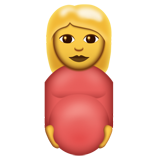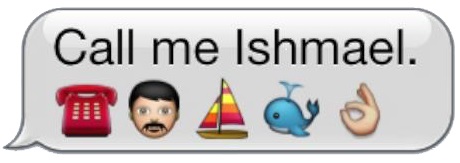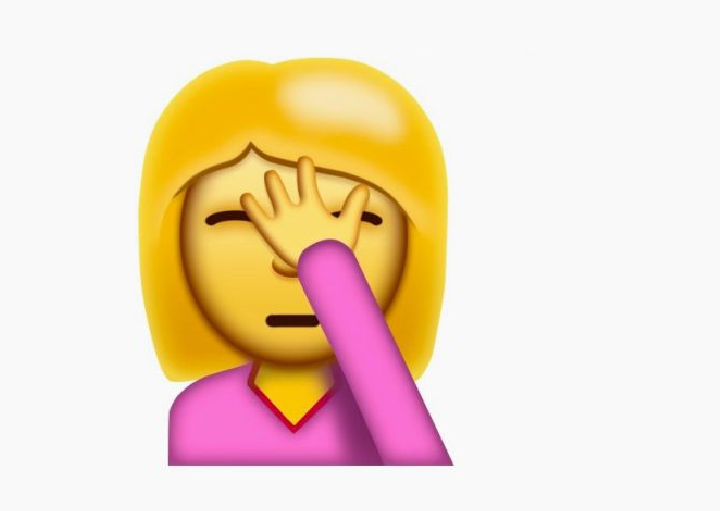If you’ve ever struggled with how to express complex ideas like “bacon,” take heart – there’s a new generation of emojis on the way.

The Unicode Consortium, the worldwide co-ordinator of keyboard code, has unveiled 38 new emojis as candidates for Unicode 9, a computer text-encoding system, which is due for an update in 2016.
The new illustrations include a duck, a cowboy smiley and clinking glasses of champagne. Or, for those who have trouble breaking big news like a pregnancy or a breakup, you’ve got these as well:

Like them or not – and many people don’t – emojis are a popular and constantly expanding form of communication. Are they just a lazy devolution of language? We’ll get to that.
First, a simpler but increasingly confusing question: what’s the difference between emojis and emoticons?
It’s getting more difficult to tell, and the difference now is probably more in the technical makeup than the appearance.
Emoticons are the older, simpler forerunner of emojis, just a simple typograhic representation of an emotion like :-). Their first digital use is generally credited to U.S. computer scientist Scott Fahlman, who suggested 1982 that typographic smiley or frowny faces could be useful in distinguishing online jokes and serious statements.
READ MORE: Twitter unveils ‘Star Wars’ emoji
Emojis – a portmanteau of Japanese words for “picture” and “character” – were created by a Japanese firm in the late 1990s. While emoticons were originally meant to show emotions, emojis are actually pictures showing a wider variety of situations and objects. They’re also more complex since even a typewriter can create an emoticon, but emojis actually require some software support.
Perhaps not surprisingly, emoticon creator Fahlman is on the record criticizing emojis as “ugly” and unimaginative.
Although they represent more than just emotions, the most popular ones still convey feeling, at least according to the eyestrain-inducing Emojitracker, a real-time aggregator of emoji use on Twitter. The most popular is “face with tears of joy,” and most of the top 10 include smiley faces or hearts.
Another highly popular one is a little more cryptic.

The “smiling poop” emoji doesn’t rank in the top 10, or even 100, but it’s still an emoji of choice, especially for Canadians. A report from software company SwiftKey found that Canadians are the most prolific pile-of-poop users on the planet.

READ MORE: Canadians lead the world in using the smiling poop emoji
So what does it actually mean?
There’s a glut of online analysis behind the precise meaning of a smiling pile of digital poop, but its original intent was a Japanese symbol of good luck. Now it can, and often does, mean any number of things.
Either way, a grinning animated bowel movement seems a pretty lowbrow form of communication. Emojis are inherently silly and, as part of the growing lingo of “text-speak,” get blame for generally dumbing down our communication skills.
Linguistics Professor Sali Tagliamonte rejects that argument, saying emojis represent a new sort of fluency that can complement English, but doesn’t take away from it.
“(Emojis) function in parallel to language that’s going on around them,” she explains. “They’re functioning as punctuators or exclamatory devices, because around those emotions, the language is going along its merry way.”
READ MORE: Emojis the modern day answer to cave paintings, one tweet and text at a time
Since emojis don’t include some of the most basic aspects of a language – even articles like “the – Tagliamonte says emojis don’t represent any sort of threat to our communication skills. Rather, they’re just a new way to be creative with language.
Up to this point, I haven’t seen them functioning systemically,” she says. “People put them in to be fun or funky but they’re not, as far as I can see, approaching a place or a situation where they’re going to infiltrate a grammar system or push the boundaries of a language system itself.”
That’s why Emoji Dick, the all-emoji translation of Moby Dick, still includes English text, since even the opening line is fairly unintelligible strictly in emojis.

Like them or not, it seems emojis are sticking around for the long haul. Given their digital nature, they may not endure for future societies to ponder, like we do with Egyptian heiropglyphs. Can you imagine a future society trying to puzzle out what a smiling piece of poop was supposed to mean?



Comments